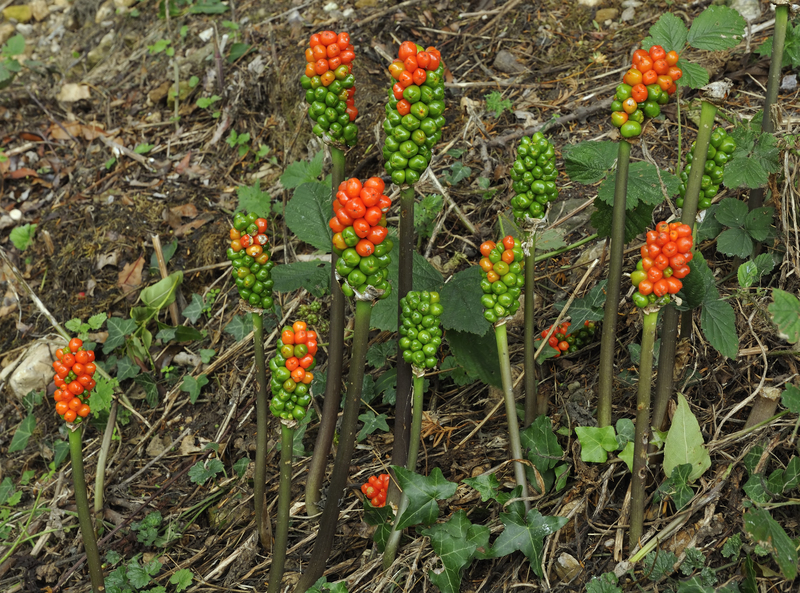Transforming Organic Residue into Soil Rich in Nutrients
Posted on 14/08/2025
Transforming Organic Residue into Soil Rich in Nutrients
In today's environmentally conscious world, the transformation of organic residue into soil rich in nutrients is essential for achieving sustainable agriculture, eco-friendly gardening, and maintaining healthy landscapes. Organic residue, which includes kitchen scraps, leaves, garden waste, and agricultural by-products, serves as a valuable resource rather than something to discard. By recycling organic matter, we can minimize landfill waste, reduce greenhouse gas emissions, and create fertile, productive soils. This article explores the science, methods, and best practices for converting organic residue into nutrient-dense soil.
What is Organic Residue?
Organic residue refers to any decomposable material derived from living organisms. These residues can come from a wide range of sources, including:
- Kitchen and food scraps (vegetable peels, fruit waste, coffee grounds, eggshells)
- Yard waste (grass clippings, leaves, small branches)
- Crop stubble and agricultural by-products (straw, husks, shells)
- Animal manure and bedding
- Wood chips, sawdust, and paper

The Benefits of Recycling Organic Matter
- Soil Enrichment: Recycling organic waste improves the structure of soil, increases its water retention capacity, and enhances its ability to deliver essential nutrients to plants.
- Eco-Friendly Practice: Diverting organic residue from landfills reduces methane emissions--a potent greenhouse gas--from anaerobic decomposition.
- Resource Efficiency: Creating nutrient-rich soil from organic waste reduces the need for chemical fertilizers, supporting more sustainable and cost-effective agriculture and gardening.
- Erosion Prevention: Enhanced soil structure helps prevent erosion, protecting both natural and cultivated landscapes.
- Biodiversity Promotion: Organic matter feeds a rich community of beneficial microorganisms, earthworms, and insects in the soil ecosystem.
The Science Behind Soil Enrichment
The transformation of organic residue into fertile soil is underpinned by natural decomposition processes. Microorganisms such as bacteria, fungi, and actinomycetes break down complex organic compounds in residues, converting them into simpler, stable forms known as humus. Humus acts as the foundation of nutrient-dense soil, retaining moisture and supplying a slow-release source of nitrogen, phosphorous, potassium, and other micronutrients vital for plant growth.
Decomposition Process Explained
- Initial Breakdown: Mesophilic bacteria begin digesting easily decomposable materials, releasing heat and creating the right environment for further bacterial activity.
- Thermophilic Stage: As temperatures rise, thermophilic organisms accelerate the breakdown of tougher compounds, destroying pathogens and weed seeds.
- Cooling and Curing: As decomposition slows, beneficial fungi, insects, and earthworms move in to finish processing the material and form stable humus.
Methods for Transforming Organic Residue into Nutrient-Rich Soil
There are several proven techniques to convert organic matter into soil amendments that nurture your plants and restore ecosystem balance. Below are the most popular and effective methods:
1. Composting
Composting is perhaps the most widely used method for recycling organic residue. It involves creating controlled aerobic conditions where microorganisms can break down organic materials efficiently. Composting methods include:
- Backyard Composting: Piling up organic material in compost bins or heaps and managing moisture and aeration manually.
- Vermicomposting: Utilizing red wiggler worms (Eisenia fetida) to accelerate decomposition and produce highly fertile worm castings.
- Bokashi Composting: An anaerobic fermentation process using specific microbes to digest food scraps rapidly, ideal for indoor spaces.
- Trench Composting: Burying organic waste directly in garden soil where it decomposes in situ, nourishing the soil around plant roots.
2. Mulching
Mulching involves applying organic residue directly to the soil surface to serve as a protective layer. As mulch breaks down, it:
- Feeds soil microbes and earthworms, enriching the soil naturally.
- Retains moisture, moderates temperature, and suppresses weeds.
- Reduces soil erosion and compaction.
3. Green Manuring
Green manuring refers to the practice of growing and then incorporating certain plants--such as clover, vetch, or rye--directly into the soil. These "green manure" cover crops:
- Fix nitrogen from the atmosphere, enriching the soil with this key nutrient.
- Improve soil structure and organic matter content.
- Discourage weeds and interrupt pest and disease cycles.
4. Sheet Composting (Lasagna Gardening)
Sheet composting, also known as lasagna gardening, involves layering organic residues and soil directly over a garden bed. Over time, these layers decompose in place, creating deep, nutrient-rich soil perfect for planting without the need for tilling or digging.
Step-by-Step Guide to Composting Organic Residue
Ready to begin your journey towards fertile, high-quality soil? Follow these steps to get started with home composting:
Step 1: Gather and Prepare Materials
- Green Materials: Nitrogen-rich sources such as kitchen scraps, coffee grounds, and fresh grass clippings.
- Brown Materials: Carbon-rich sources like dry leaves, straw, cardboard, and wood chips.
Step 2: Build Your Pile or Bin
- Location: Choose a well-drained area with easy access to water and sunlight.
- Structure: Alternate green and brown layers, aiming for a ratio of about 1:2 greens to browns.
Step 3: Maintain the Pile
- Moisture: Keep the pile as damp as a wrung-out sponge, but not soggy.
- Aeration: Turn the pile every 1-2 weeks to supply oxygen and speed decomposition.
- Temperature: Monitor for a rise in heat, which indicates active breakdown. A hot pile is working!
Step 4: Harvest and Use
- After several months, the compost will become dark, crumbly, and earthy-smelling. This is your finished nutrient-rich soil amendment.
- Sieve or screen if needed to remove larger particles before applying to garden beds, flower pots, or lawns.
Vermicomposting: Turning Organic Residue into "Black Gold"
Vermicomposting is a highly efficient way to recycle kitchen and organic waste using composting worms. The worms digest organic matter, and their castings--often called "black gold" by gardeners--are densely packed with nutrients and beneficial microbes. Vermiculture systems can be set up indoors or outdoors and are ideal for apartment dwellers or small-scale gardeners.
Fundamentals of Vermiculture
- Use Eisenia fetida or Lumbricus rubellus species for best results.
- Maintain bedding of damp, shredded newspaper or coconut coir to house worms.
- Add food scraps in moderation and avoid meat, dairy, and oily foods.
- Harvest worm castings every few months and use directly on plants for a nutrient-rich boost.
Best Practices for Managing Organic Waste
To ensure efficient transformation of organic residues into valuable soil amendments, follow these best practices:
- Balance Inputs: Aim for a healthy ratio of carbon (browns) to nitrogen (greens) for optimal composting.
- Shred and Chop: Break down large items to speed up the decomposition process.
- Avoid Contaminants: Do not compost meat, dairy, glossy paper, or diseased plants which can attract pests and harm garden health.
- Monitor and Adjust: Regularly check moisture, aeration, and temperature of compost piles or bins.
- Use Finished Product Wisely: Apply compost or worm castings to enrich soil before planting or as a side dressing during the growing season.
Advanced Techniques: Biochar, Hugelkultur, and Soil Amendments
For even greater transformation of organic residue into nutrient-rich soils, consider these advanced options:
Biochar
Biochar is a form of charcoal produced by pyrolyzing organic material (in the absence of oxygen). It provides long-lasting carbon storage, increases soil fertility, and helps retain nutrients and water.
Hugelkultur
This technique involves building raised garden beds using logs, branches, leaves, and other organic debris as the foundational base, then covering with soil. Over time, the woody debris decomposes, providing persistent nutrient release and superior water retention.
The Role of Microorganisms in Soil Transformation
Microbial life is at the heart of every healthy compost and soil system. These tiny workers break down complex organic molecules, mineralize nutrients, and facilitate the transformation of raw residues into humus. Encouraging microbial diversity ensures robust soil health, faster residue decomposition, and resilient plant growth.
- Fungi: Break down lignin and cellulose in tough plant material.
- Bacteria: Rapidly decompose simple sugars and proteins.
- Actinomycetes: Handle more resistant substances, contributing to earthy smell in good compost.
- Protozoa, nematodes, and earthworms: Further decompose matter, cycle nutrients, and aerate the soil.
Common Challenges and Solutions in Composting
While transforming organic residue has incredible benefits, it's not without its obstacles. Here are key issues and their solutions:
- Unpleasant Odor: Too many wet "greens" or poor aeration can cause bad smells. Add dry "browns" and mix the pile often.
- Pests: Exposed food waste can attract rodents or flies. Bury fresh scraps under brown materials or use a closed bin.
- Slow Decomposition: Pile may be too dry, cold, or lacking nitrogen. Adjust moisture, aeration, or balance green/brown inputs.
- Finished Compost Too Chunky: Sieve larger items and return them to the pile for further breakdown.
Conclusion: Embrace a Circular Soil Economy
Transforming organic residue into soil rich in nutrients is a pivotal step toward sustainable living and regenerative agriculture. By adopting methods such as composting, mulching, vermicomposting, and green manuring, everyone from home gardeners to commercial farmers can unlock the enormous value of organic waste. Not only does this process create more fertile and productive soil, but it also closes the loop in the natural cycle--returning essential nutrients to the earth and supporting a healthier, greener future.
Start your journey today! Gather your household and garden waste, set up a compost or worm bin, and begin enriching your soil. Over time, you'll witness the transformation--both in your garden and in your understanding of how interconnected and resourceful nature can be.

Frequently Asked Questions (FAQs)
Can I compost citrus peels and onion skins?
Yes, but in moderation. Citrus and onion residues are acidic and high in essential oils which can slow down the composting process. Mix well with other materials and avoid overloading your pile with them.
How long does it take to create nutrient-rich compost?
Depending on the method and management, compost can be ready in as little as 2-4 months for hot composting, or up to a year for passive heaps. Vermicomposting is typically faster, often taking just a few months.
What are the signs of good compost?
Finished compost is dark brown, crumbly, and has an earthy aroma. There should be no recognizable food chunks or foul smells.
Start Transforming Organic Residue Today
The path to thriving, nutrient-dense soil lies beneath our feet--and in our ability to put organic residue to productive use. By using the tips and techniques outlined here, you are not only nourishing your own plants, but contributing to global soil regeneration and a more sustainable planet.
For more insights on soil health, quality composting, and sustainable gardening, explore related articles or consult local agricultural extension services.

